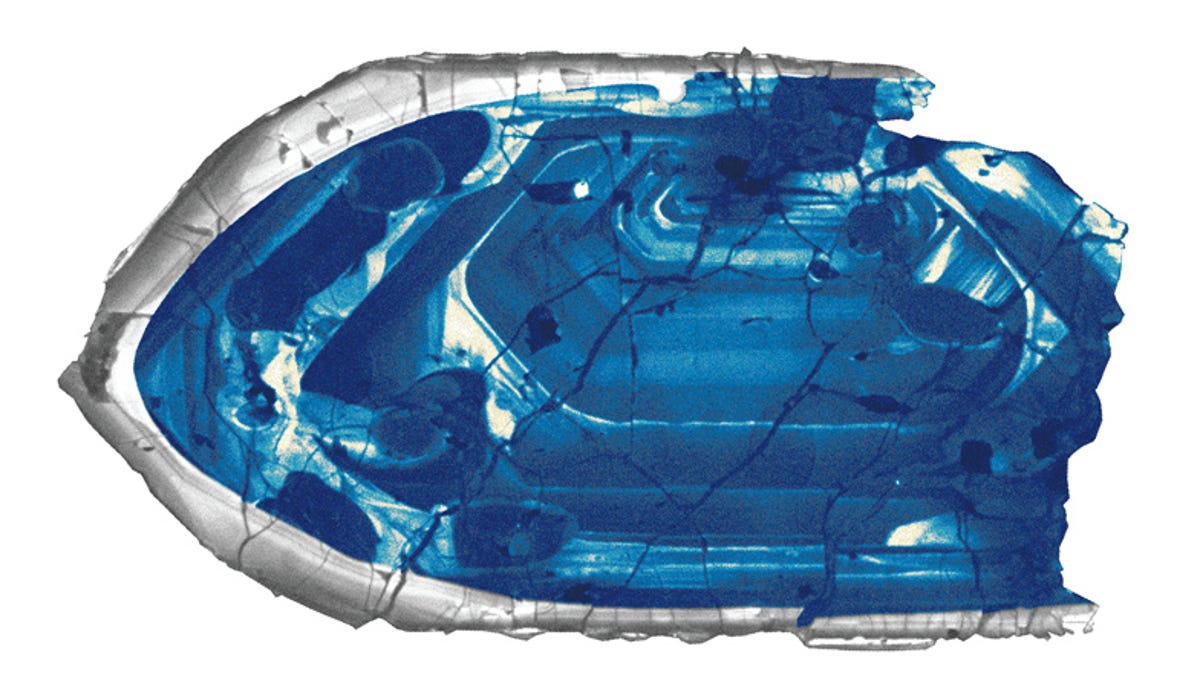4.4 billion-year-old crystal points to chill early Earth
A pretty bit of blue zircon dating back billions of years to the formation of the Earth's crust may be one of the oldest pieces of the planet.

A tiny piece of crystal found on a sheep farm in Australia is giving researchers insight into the very early formation of the Earth and its crust. The microscopic zircon crystal under study is said to be made of the oldest known material formed on Earth, dating from soon after the molten rock that originally formed the planet had cooled.
The discovery helps to push the clock back on the formation of oceans and early life. "This confirms our view of how the Earth cooled and became habitable. This may also help us understand how other habitable planets would form," says lead researcher John Valley, a professor at the University of Wisconsin at Madison.
The study, titled "Hadean age for a post-magma-ocean zircon confirmed by atom-probe tomography," was published Sunday in the journal Nature Geoscience. "Hadean age" refers to Earth's first geologic eon.
Accurately dating the zircon back that far required the use of atom-probe tomography, a newer technique that creates 3D reconstructions of the locations of atoms in a sample. This confirmed the age determined by mass spectrometry, a more typical method of dating that had been subject to some doubts about its accuracy.
Some scientists have been concerned that lead atoms within a crystal could shift over time, resulting in an inaccurate date. The atom-probe tomography, however, verifies the sample's age.
What this boils down to is that the early Earth may not have been as harsh an environment as some scientists believe. Considering that our planet formed 4.5 billion years ago, it only took about 100 million years for the formation of the crust, with oceans coming shortly thereafter. That may well mean the ingredients for life were in place earlier than thought. That's a lot of information to come out of one pretty little shard of gemstone.

